In the heart of the Ligurian Riviera, Genoa stands as a city of inestimable historical and cultural value. Known as “La Superba” (the Proud One), this port city encapsulates centuries of maritime history, breathtaking architecture, and a culinary tradition that seduces every palate. In this article, we will take you on a 48-hour journey through Genoa, from its rich history to its must-see attractions, such as the Genoa Aquarium, and the best places to savor the local cuisine.

The history of Genoa
The origins of Genoa date back to pre-Roman times, but it was under the Roman Empire that it began to develop as an urban center. However, it was in the Middle Ages that Genoa began to emerge as one of the four Maritime Republics of Italy, alongside Venice, Pisa, and Amalfi.
This period marked the beginning of its rise as a naval and commercial power, with the creation of a vast network of trade routes in the Mediterranean and beyond.
During the Crusades, Genoa acquired a prominent role, providing naval support and benefiting from trade exchanges with the Levant. This period brought great prosperity to the city, which was reflected in the construction of imposing buildings, churches, and palaces.
In the 12th century, Genoa became an independent republic, with a government that alternated power among the most influential noble families. The rivalry with Venice, another great maritime power, was a constant in its history, culminating in numerous wars for the control of territories and trade routes.
The decline of Genoa began in the 17th century, due to various wars, epidemics, and the growing competition from new Atlantic trade routes. However, the city experienced a new phase of development in the 19th century, particularly after the Unification of Italy, when it became an important industrial and port center.
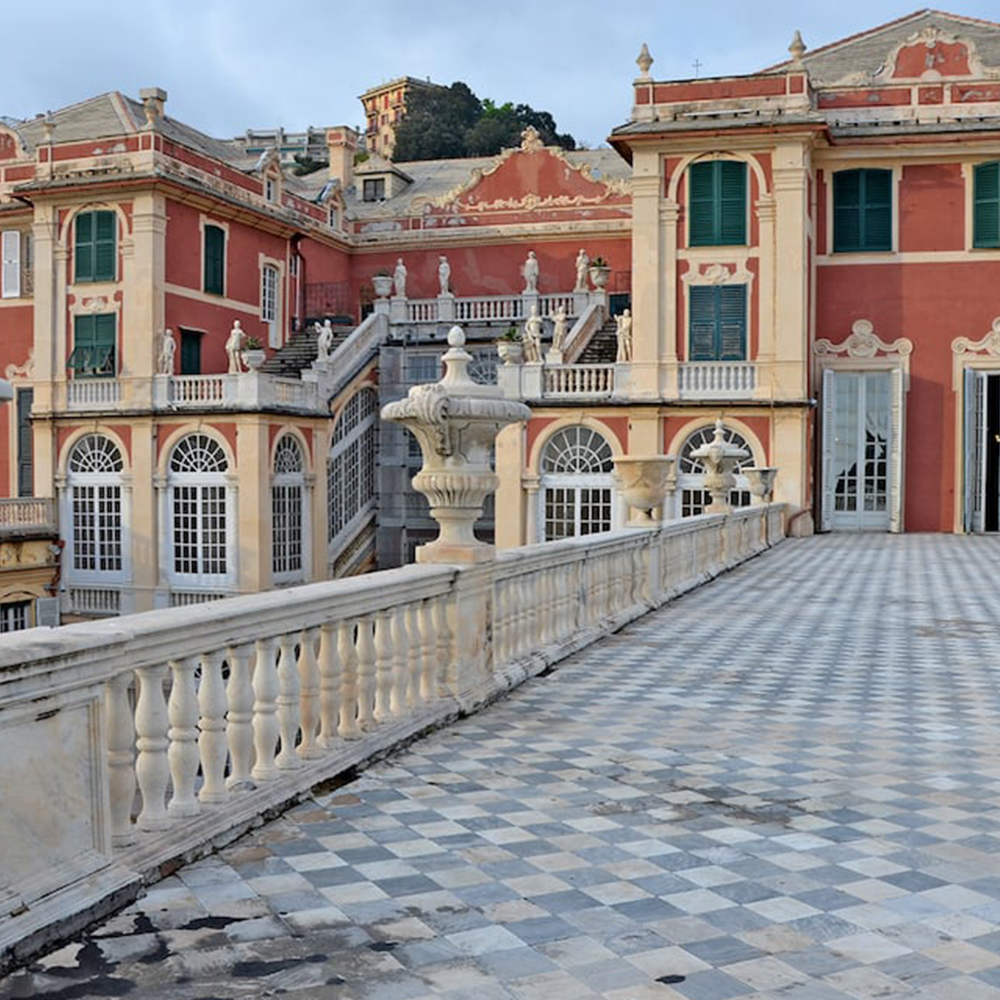
Genoa, a city to discover
This ancient Maritime Republic, known as the Superb, guards a historical and artistic heritage that harmoniously intertwines with its lively contemporary spirit. From labyrinthine alleys that tell tales of bygone eras to majestic palaces defying time, Genoa is a living stage where every street, square, or monument tells a part of its glorious history.
Historic center and Via Garibaldi
The beating heart of Genoa is undoubtedly its historic center, a labyrinth of alleys (carruggi) that unfold like a maze rich in history and charm. Walking through these narrow, shadowy streets, one is immediately enveloped by the medieval atmosphere of the city, with its historic buildings, artisanal shops, and the scents of Ligurian cuisine wafting through the air.
One of the jewels of the historic center is Via Garibaldi, formerly known as Strada Nuova. This street, listed as a UNESCO World Heritage Site, is an extraordinary example of Renaissance urban planning. Characterized by a succession of noble palaces, Via Garibaldi represents the heart of the Genoese aristocracy of the 16th century. The Palazzi dei Rolli, once residences of the city’s most influential and powerful families, now house museums, art galleries, and cultural institutions.
Visiting Via Garibaldi is like taking a step back in time. Each palace has its own unique story and distinctive architecture, with sumptuous facades, internal courtyards, and refined decorations. Among these, Palazzo Rosso, Palazzo Bianco, and Palazzo Tursi are the most renowned, forming a museum complex that offers visitors a deep dive into Genoese and European art, with works ranging from the Renaissance to the Baroque.
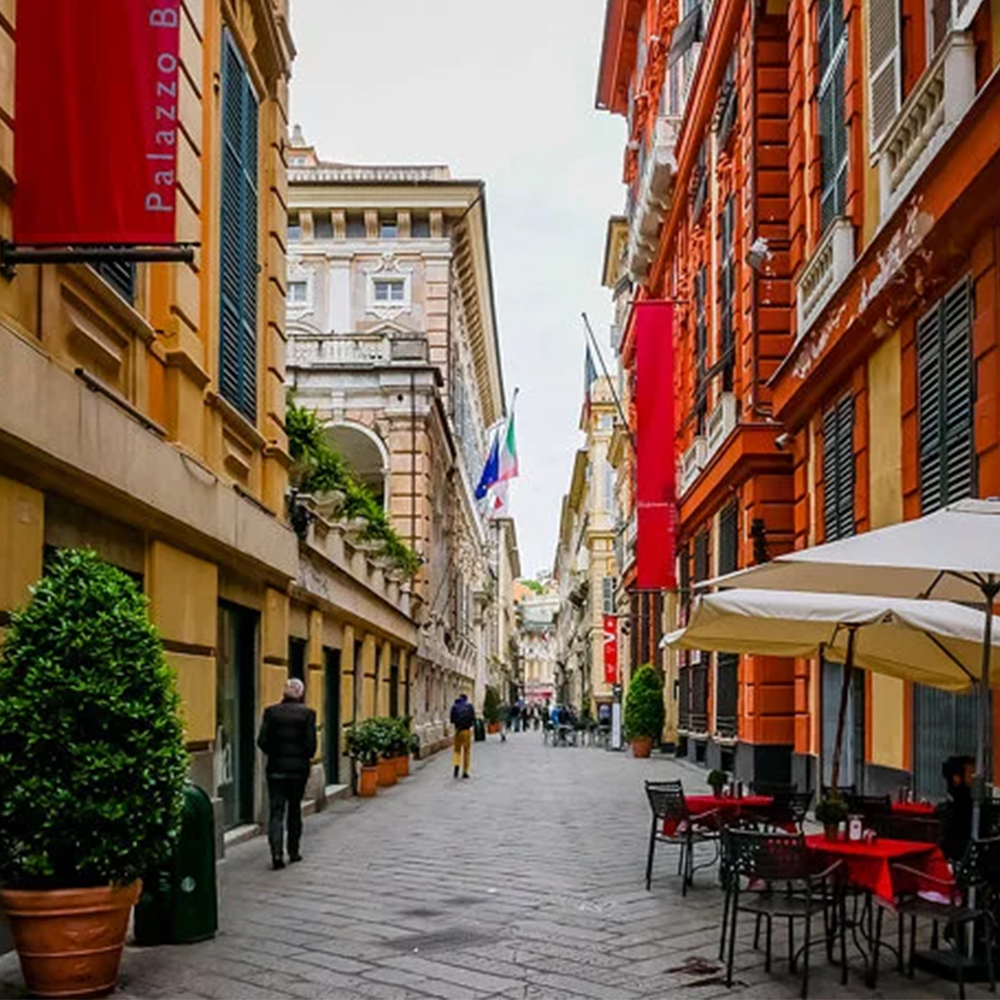
The cathedral of San Lorenzo
The Cathedral of San Lorenzo, dedicated to the patron saint of Genoa, is one of the most emblematic and fascinating symbols of the city. Located in the heart of the historic center, this imposing structure stands out for its extraordinary facade of black and white stripes, typical of Ligurian Romanesque-Gothic architecture. Its construction began in the 12th century, but over the centuries it has undergone various modifications and additions that have enriched its style and beauty.
Upon entering the cathedral, visitors are greeted by a majestic interior, where light filters through the stained glass windows, creating a mystical and solemn atmosphere. The interior of the cathedral is a triumph of art and history, with numerous richly decorated side chapels, frescoes, sculptures, and artworks that tell centuries of Genoese devotion and history.
One of the most notable elements inside the Cathedral of San Lorenzo is the Chapel of Saint John the Baptist, which houses the relics of the saint. Additionally, the cathedral safeguards the famous “Sacro Catino,” once believed to be the Holy Grail. Although it was later discovered to be a green glass dish, its history and mystery continue to enchant visitors.
Another fascinating aspect of the Cathedral of San Lorenzo is its crypt, which houses the tombs of several archbishops and Genoese nobles. The crypt, with its cross-vaulted ceilings and columns, offers an atmosphere of peace and reflection, a stark contrast to the bustle of the city outside.
Finally, for those in search of a spectacular view, it is possible to climb the bell tower. From here, one can enjoy a breathtaking panoramic view of Genoa, ranging from the rooftops of the historic center to the sea.
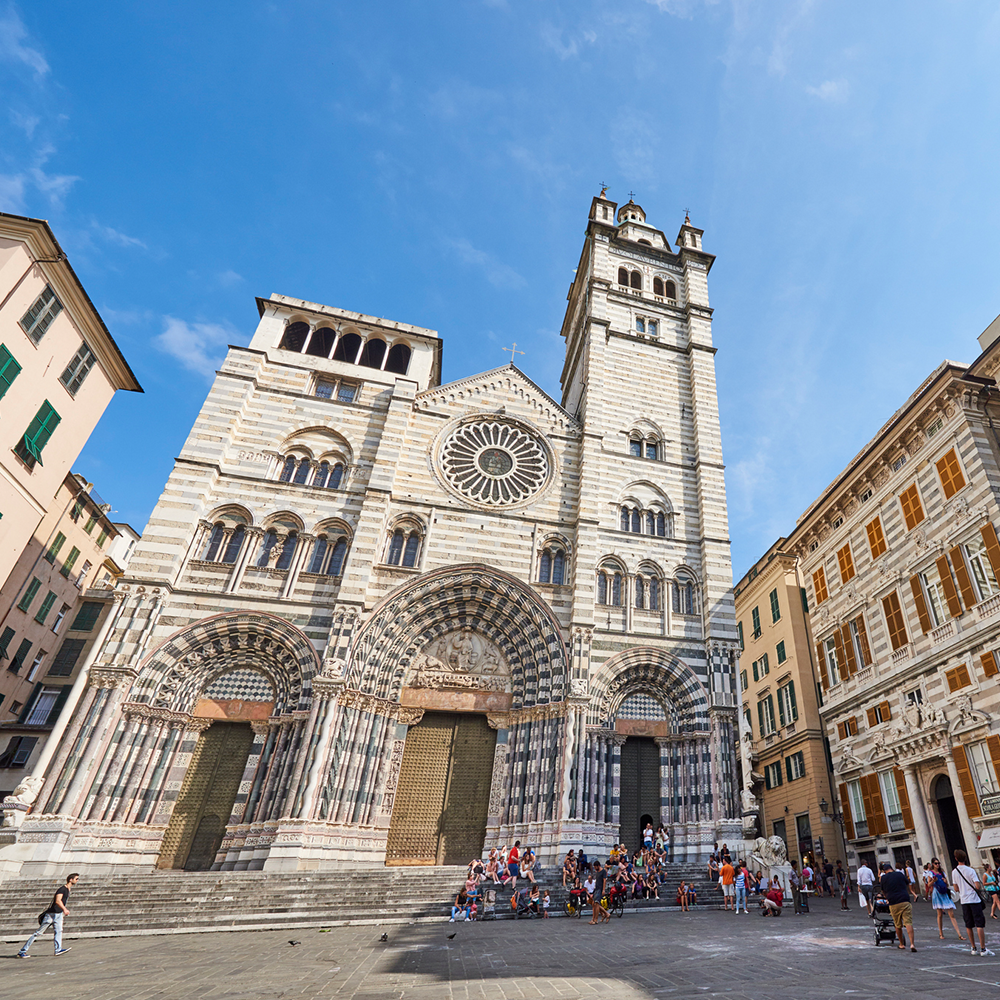
The old port and the Aquarium of Genoa
The Old Port of Genoa is an extraordinary example of how historical spaces can be transformed and revitalized to embrace the present without losing their rich past. Once the heart of Genoese maritime power, today the Old Port is a vibrant cultural and leisure center, renovated in the 1990s by the famous architect Renzo Piano. This area, which combines history, art, and nature, has become a meeting point for citizens and a must-see attraction for tourists.
The highlight of the Old Port is the Aquarium of Genoa, one of the largest and most technologically advanced aquariums in Europe. Opened in 1992, the Aquarium offers an exciting journey through marine biodiversity, with over 70 environments that replicate the ecosystems of seas and oceans around the world. Visitors can admire a wide range of species, from colorful tropical fish to majestic sharks, as well as playful penguins and elegant jellyfish. The Aquarium is not just a place of entertainment, but also a center for education and research in marine conservation, playing a crucial role in raising awareness about environmental issues.
In addition to the Aquarium, the Old Port offers numerous other attractions. The Bigo, another creation of Renzo Piano, is a crane-like structure that offers a 360-degree panoramic view of the city and the port.
The Old Port is also the ideal place for a relaxing stroll along the docks, where you can find numerous cafes, restaurants, and shops. During the summer, the area becomes an open-air stage for concerts, festivals, and cultural events, making it a hub of Genoa’s social life.
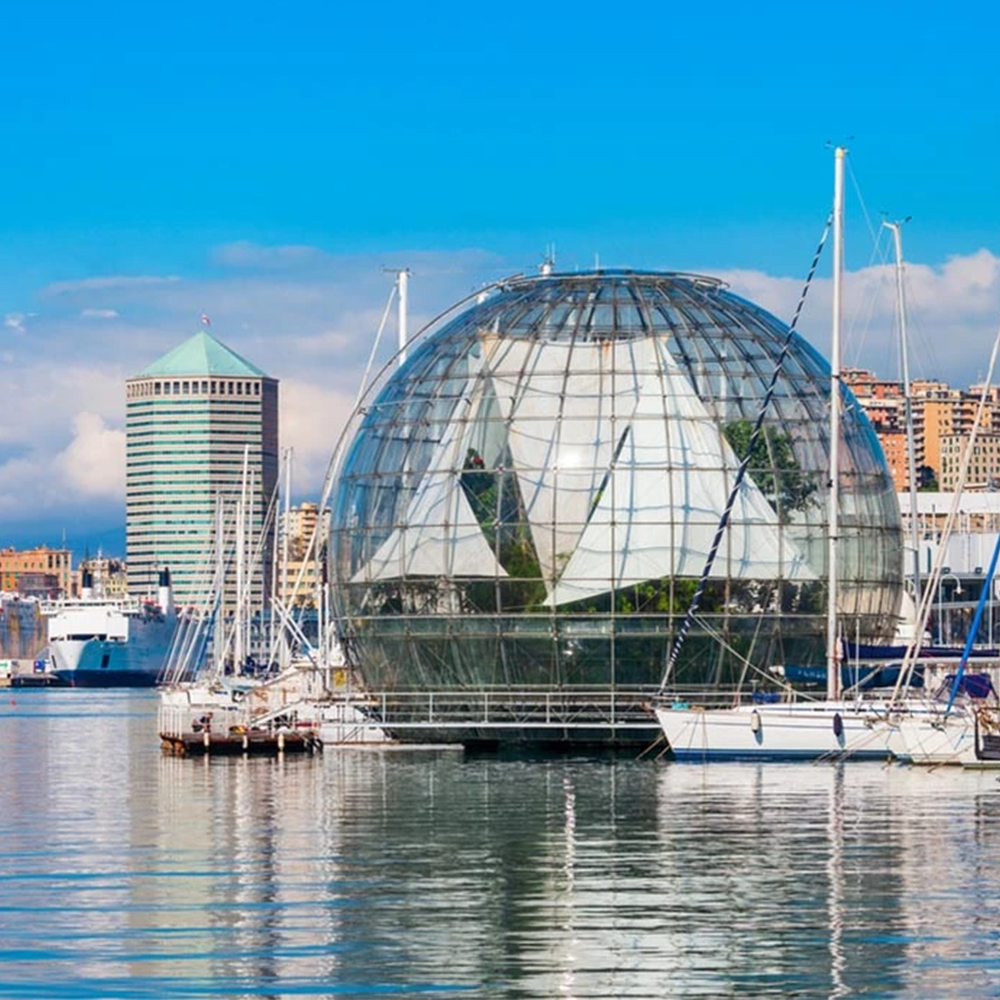
Museum of strada nuova
located in the heart of Genoa’s historic center, represent one of the most significant expressions of the city’s artistic and cultural heritage. This museum complex includes three extraordinary historical palaces: Palazzo Rosso, Palazzo Bianco, and Palazzo Doria Tursi, all situated on the famous Via Garibaldi, previously known as Strada Nuova.
Palazzo Rosso is renowned for its rich art collection, which includes works by masters such as Van Dyck, Veronese, and Filippino Lippi. The palace itself is a work of art, with sumptuously decorated interiors and a charming hanging garden. The visit also offers the opportunity to climb to the panoramic terrace for a breathtaking view of the city.
Palazzo Bianco houses a collection of European art from the 12th to the 17th century, featuring pieces by artists like Caravaggio, Rubens, and Strozzi. The elegantly furnished rooms of the palace offer a journey through different artistic eras, allowing visitors to immerse themselves in the history of European art.
Palazzo Doria Tursi is an elegant building that houses not only artworks but also important historical relics, including the famous guitar of Paganini. This palace is particularly known for its collection of ancient musical instruments and the refined furnishings that adorn its rooms.
Beyond the Museums of Strada Nuova, Genoa also offers an important scene of modern and contemporary art. The Museum of Contemporary Art at Villa Croce, located in a beautiful villa surrounded by a park, is an example of this. The museum hosts a vast collection of contemporary Italian and international art, with temporary exhibitions ranging from painting to sculpture, photography to multimedia art. This space is not just a museum, but an active center of contemporary culture, offering lectures, workshops, and events, making it a focal point for enthusiasts of modern and contemporary art.
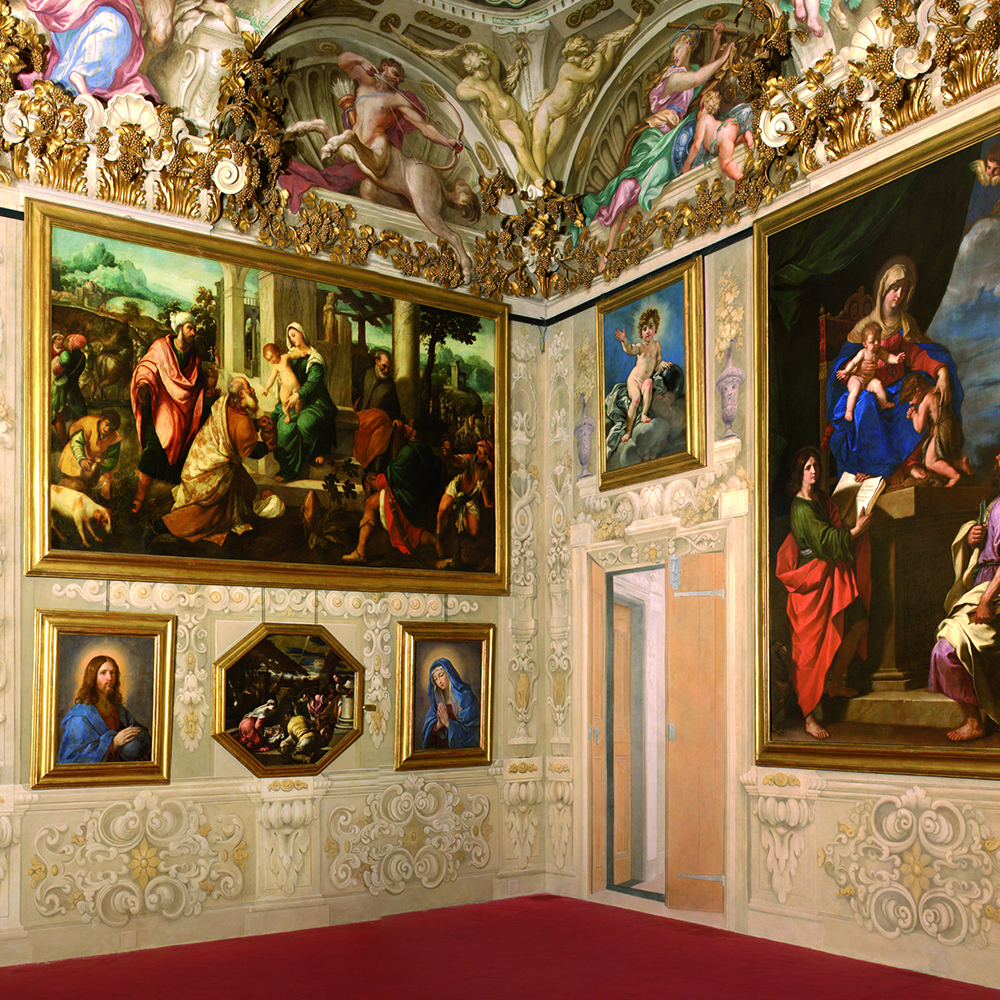
Belvedere of Castelletto
The Belvedere of Castelletto is one of the most enchanting and picturesque places in Genoa, a true panoramic balcony overlooking the city. Located in the Castelletto district, above the historic center, this observation point offers breathtaking views that encompass the entire span of the harbor, the red roofs of ancient houses, the church towers, and, in the distance, the sea merging with the sky.
Reaching the Belvedere of Castelletto is an enchanting part of the experience. One of the most captivating ways is to take the Castelletto elevator, a historic installation inaugurated in the early 20th century. This elevator, which departs from Piazza Portello, near Via Garibaldi, ascends the hillside and in a few minutes takes visitors directly to the Belvedere, offering picturesque glimpses of the city along the way.
Once there, visitors can enjoy a panorama that is a true spectacle of nature and architecture. The Belvedere is the ideal place to capture memorable photographs or simply sit and admire the beauty of Genoa from a unique perspective. The view stretches from the maze of alleys in the historic center to the modern Old Port, encompassing the city’s main landmarks, such as the Lanterna, a symbol of Genoa, and the surrounding hills.
The Belvedere of Castelletto is not only a viewpoint but also a place of peace and tranquility, away from the hustle and bustle of the city below. Surrounded by well-maintained gardens and green areas, it is a perfect spot for a relaxing stroll or a moment of rest, perhaps enjoying an ice cream or a coffee at one of the small nearby cafes.
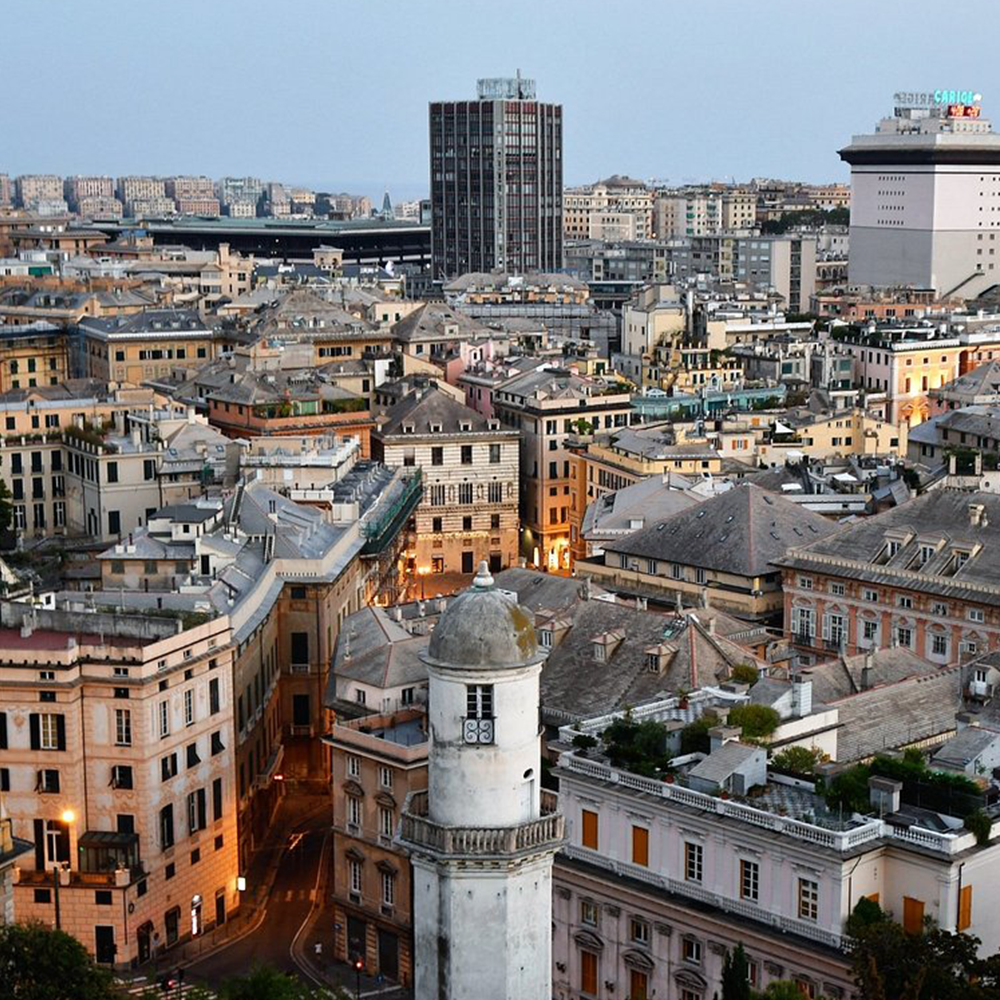
Food in Genoa
Genoa is not only a treasure trove of historical and natural beauty but also a paradise for food enthusiasts.
At the center of this gastronomic journey is the famous Pesto Genovese, a fragrant and flavorful green sauce made with fresh basil, pine nuts, garlic, Parmigiano Reggiano, Pecorino, and olive oil, traditionally served with pasta such as trofie or trenette.
But Genoa is not just about pesto; it’s also the city of Focaccia Genovese, golden, crispy, and slightly salty, perfect at any time of the day. You can’t talk about Genoese cuisine without mentioning Farinata di Ceci, a thin and crispy savory cake, a simple yet historically rich dish.
For seafood lovers, Fritto Misto di Mare offers a taste of the freshness of the Mediterranean, with a variety of fish and seafood lightly breaded and fried to perfection. More elaborate dishes like Cappon Magro, a layered seafood salad, and Acciughe Ripiene, showcase the versatility and creativity of local cuisine.
Pansoti with Walnut Sauce is another delight, with their stuffed pasta served with a rich and creamy walnut sauce. For the more adventurous, Cima alla Genovese offers a unique and traditional taste. Finally, the sweet Pandolce Genovese, with its combination of candied fruit, raisins, and pine nuts, concludes the meal on a sweet and spicy note. Each dish in Genoa is a dive into the culture and tradition of a city that has turned its cuisine into an art to celebrate and share.
The best trattorias in Genoa
Trattoria da Maria, located in the heart of the historic center, is an institution for those seeking a genuine and unpretentious gastronomic experience. Here, in a lively and welcoming atmosphere, you can savor homemade dishes like the classic Genoese pesto.
For seafood enthusiasts, the Osteria di Vico Palla in the Porto Antico district is an excellent choice, famous for its “frittura di paranza” (mixed fried seafood) and “stoccafisso accomodato” (rehydrated salted cod).
At Il Genovese, near Piazza De Ferrari, visitors can indulge in refined dishes such as trofie al pesto and pansoti in walnut sauce in an elegant setting.
For those seeking a more modern experience, il Soho Restaurant & Fish Work expertly combines Ligurian cuisine with a contemporary twist, all in a picturesque location overlooking the harbor.
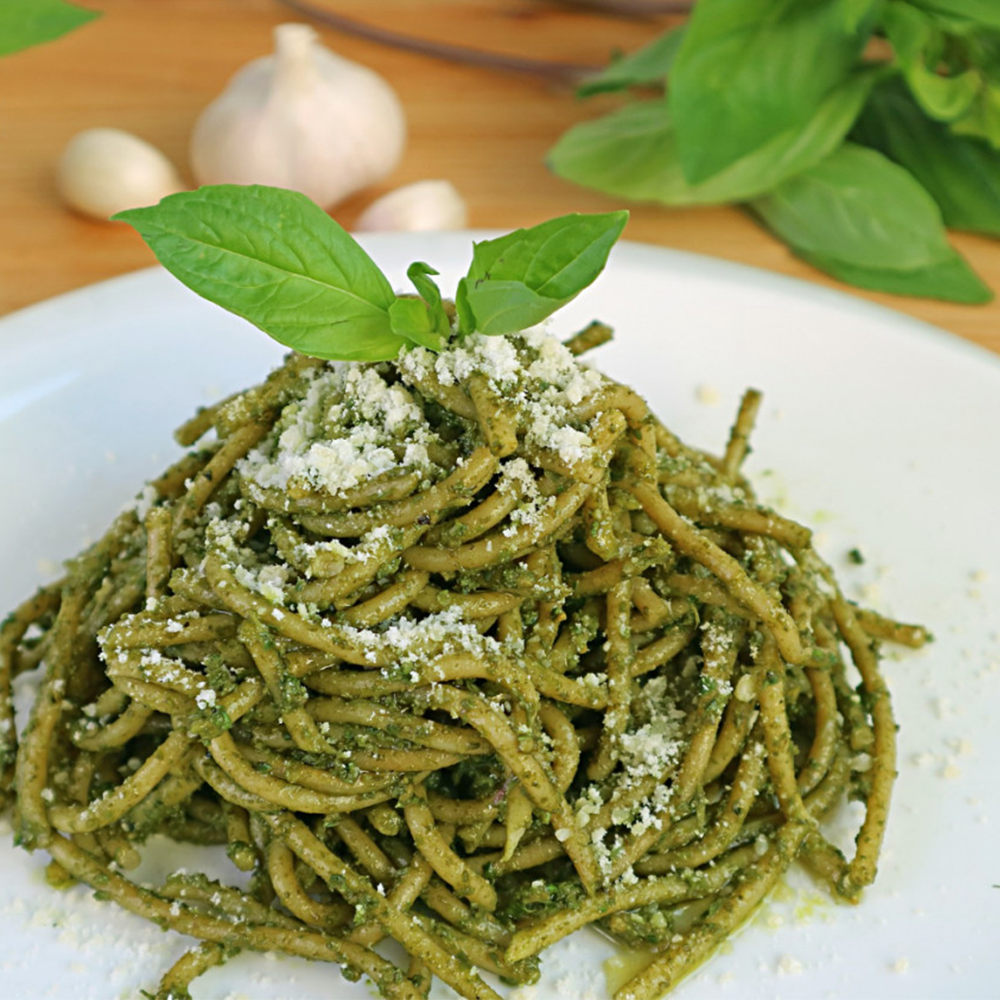
Liguria is also a destination for sustainable tourism. Read the article about it. https://in-italy.eu/in-giro/turismo-sostenibile/.


